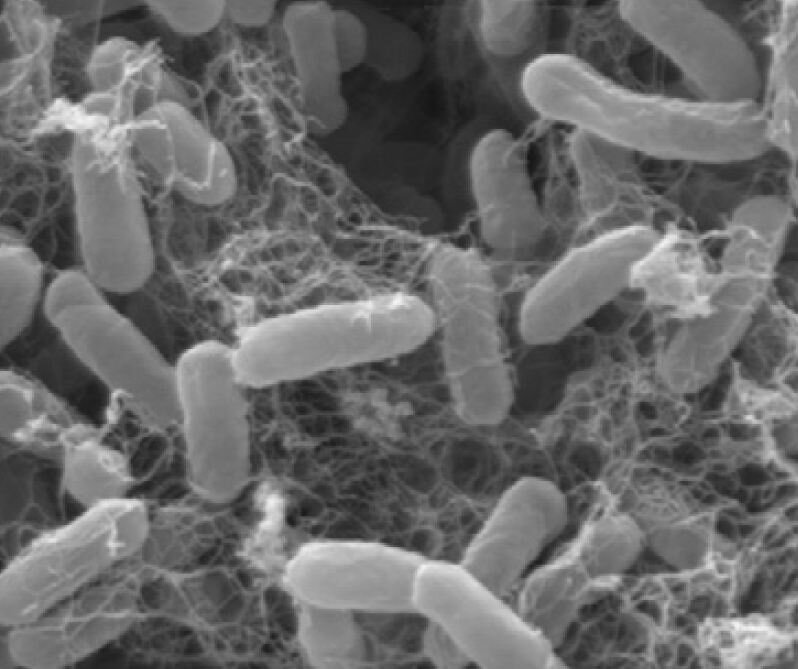Dr James Bowen, Nanotechnology research group leader at The Open University, shares his experience of working with NuNano on a bespoke probe development project.
Case Study
Whilst using Atomic Force Microscopy (AFM) to study hair care products and hair damage prevention in 2016, Dr James Bowen found he was pushing currently available technology to its very limits.
Using colloid probes on commercially available cantilevers, James had been able to analyse the uses of nanoscale polymer liquid films in hair care products.
Examining the residue of liquids on the hair he was able to measure the extent to which hair conditioning products provided protection from friction, and when and where the polymer coating on the hair degraded, leading to cuticle damage.
Results had been good but James’ appetite for better analysis of the friction and adhesion forces had been whetted. He was determined to find a superior solution, even if that meant creating it himself.
James was confident that AFM was the right tool. It provided him with both the control and precision required to know exactly what he was looking at and where along the length of the hair. The challenge was how to achieve the right level of force to be able to scratch and scrape the liquid polymer on the cuticle surface.
“I realised there was a gap in the market between traditional mechanical testing and what was needed to look at materials at this scale, over larger ranges,” says James.
“Using an AFM with really stiff cantilevers, I stood a fighting chance of addressing both these issues. Fundamentally though, all I had was the idea and the dimensions sketched out for the length and width of the cantilever and chip that I felt could do the job. Realising my idea was the next challenge.”
Developing new cantilevers
James was already aware of NuNano as producers of standard probes.
However, it was a chance conversation with an application scientist at JPK about his new cantilever idea that alerted him to the possibility of working with NuNano on bespoke product development.
After an initial phone call with Dr James Vicary, NuNano CEO, followed by a face to face meeting to fully understand the project requirements, James received a written project specification which accurately described his needs.
“What I needed was hundreds of cantilevers fabricated to be different lengths, thicknesses and stiffnesses. Talking to James Vicary helped to scope out the project in a more detailed way. It was great to be able to have that conversation with someone who really got what I was trying to do – and importantly, who had the enthusiasm and courage to give it a go,” says James.
Having the right partner company in place who were willing and able to do the work also helped to secure funding. Outlining NuNano’s involvement and expertise when writing the grant application mitigated much of the project proposal risk.
“Thickness is perhaps the hardest element to control during the cantilever manufacturing process but NuNano were able to produce them ranging from 12.5 to 25-micron thickness, as well as varying lengths”
The result was that NuNano delivered over 900 different width and thickness cantilevers as requested for James.
Using the JPK NanoWizard AFM, the selection box of cantilevers provided by NuNano and an analytical model James was able to predict the cantilever spring constants.
“Calibrating each cantilever and recording the data, over time it has become possible to accurately predict what thickness is needed to affect the spring constant required for the job,” says James.
The final part – estimating the resonant frequency for both – has taken some serious coding work. Colleague Dr David Cheneler, Lancaster University, developed a finite element model in order to do this.
“With the model in place, I simply measure the resonant frequency on the beams. If that’s right, then I know we’ve got the cantilever we want.”
Bespoke NuNano cantilevers with different lengths and thicknesses
Results
“Calibrations are going well,” says James, “we’ve clearly developed a new platform with lots of potential applications for measuring micro/nano friction on architecturally difficult surfaces.”
In addition to enabling significant improvement on James’ 2016 Friction and wear of human hair fibres research, he is also exploring other opportunities.
“Commercial cantilevers finish their spring constants around 50 N/m but that’s where my cantilevers start from, up to 3,000 N/m, and even up to 10,000 N/m.
This enables you to scrape away biofilms from surfaces, assessing their adhesion. Historically you couldn’t get down to the countersurfaces, due to the large forces involved, but with this technology you can.”
Uses include surface cleanliness, such as looking at how household surface cleaners prevent pathogens and bacteria from developing; or hygiene, such as dental products, looking at bugs in the mouth and on teeth.
James is planning on touring his technology at microscopy conferences in 2020. In the meantime however he is keen to talk with anyone who might be interested in finding out more about the technology and having a play with the kit.
If you feel inspired and you’d like to get in touch, then you can contact Dr James Bowen here.
If you’ve got a great idea that needs realising through bespoke development work, then please get in touch with Dr James Vicary at NuNano: info@nunano.com.
Escherichia coli biofilm after six days of growth
Tenocytes on calcium phosphate after 7 days of growth


![W1-2x field 01[1225].jpg](https://images.squarespace-cdn.com/content/v1/571e6fbb01dbae8818af9ed5/1571735999787-UGONELKFODG4H5FV6XUP/W1-2x+field+01%5B1225%5D.jpg)
![W2-2x field 02[1222].jpg](https://images.squarespace-cdn.com/content/v1/571e6fbb01dbae8818af9ed5/1571736239517-2ESI13C06SBW8BU8DVU6/W2-2x+field+02%5B1222%5D.jpg)
![W1-2x field 02[1224].jpg](https://images.squarespace-cdn.com/content/v1/571e6fbb01dbae8818af9ed5/1571736183321-YB13S1RKRW8SK53ZO709/W1-2x+field+02%5B1224%5D.jpg)
![W2-2x field 01[1223].jpg](https://images.squarespace-cdn.com/content/v1/571e6fbb01dbae8818af9ed5/1571736276338-SDZ24N63OW1OQJQ33THE/W2-2x+field+01%5B1223%5D.jpg)

